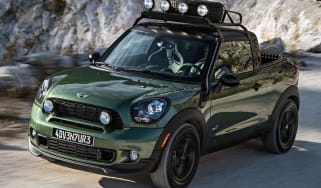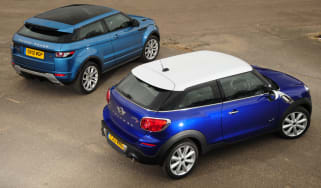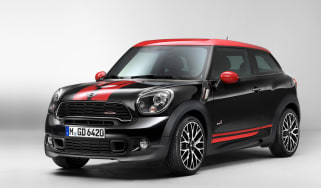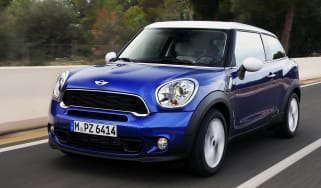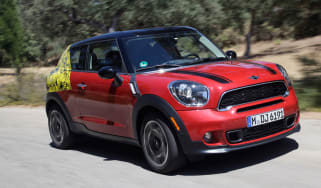MINI Paceman (2013-2016) review
The MINI Paceman mixes MINI Countryman practicality with a bit of MINI Coupe style to good effect

MINI calls the Paceman a Sports Activity Coupe and has pitched it towards customers who want an extra dose of style and a more dynamic drive than the MINI Countryman, but who still need a decent-sized boot. It's also the first three-door MINI to come with the option of four-wheel drive. There’s the full range of diesel and petrol and even a high-performance John Cooper Works version. When it comes to price, less is more – this is the most expensive MINI in the line-up, despite offering less space than the Countryman.
Engines, performance and drive
The MINI Paceman may ride higher than a regular MINI Hatch or other coupes, but it still manages to feel sporty to drive. Sports suspension features across the range but it’s a cost free option to delete it, which we’d recommend. Doing so takes the edge off the firm ride, without ruining the impressively taut body control. As you’d expect from a MINI, the steering is sharp and responsive, while the optional Sport mode weights it up further and sharpens the throttle response. Cooper S models and above come with a sports differential to help improve traction, while the ALL4 four-wheel-drive models add the benefit of 4x4 traction in wintry conditions. The expensive flagship John Cooper Works edition offers brisk performance, with a 0-62mph time of 6.8 seconds. But at the other end of the scale there’s the ALL4 four-wheel-drive diesel, which meanders to 62mph in 11.8 seconds. Engine refinement is far from class-leading on diesel models, too.
MPG, CO2 and Running Costs
The wide choice of MINI Paceman models means there’s quite a wide range of running costs. The good news is that the front-wheel-drive Cooper D has a claimed fuel consumption figure of 67.3mpg and CO2 emissions of 111g/km, which makes it the most frugal Paceman. Petrol models do reasonably well for fuel economy, too, with the Cooper S claiming 47.1mpg and 139g/km. Perhaps the best mix of performance and economy is the Cooper SD, which can sprint from 0-62mph in 9.1 seconds but also manages 62.8mpg.
Interior, design and technology
While it looks identical to the MINI Countryman from the front, with its higher nose and off-road cladding, the Paceman changes dramatically as you walk around it. It features the familiar floating roof and blacked-out window surrounds, but the roofline slopes sharply towards the rear, while at the back the Paceman has a look of its own. There are bulging wheelarches, with a beltline that goes around the bootlid where – for the first time on a MINI – there are horizontal taillights. Overall, the Paceman has the kerb appeal to rival the more expensive Range Rover Evoque, while MINI’s usual range of customisation options means you can choose from coloured roofs, optional wheels and bonnet stripes.
More reviews
In 2014 it received the same updates as the Countryman, including changes to the grille and some optionally available foglights. Buyers can also get black surrounds for the lights and Cooper S models receive a new chrome bar through the grille.
Practicality, comfort and boot space
The MINI Paceman has almost as much boot space as the MINI Countryman, with a maximum load area of 1,080 litres. There are four individual seats – where the Countryman has room for five – with the front sports seats mounted higher, allowing the rear passenger’s feet to slot underneath the seats in front. The boot lip is low, but the new rear styling means that the taillights protrude into the load area, limiting its flexibility. There's a decent amount of cubby space, though, with cupholders and space for a few odds and ends. Ultimately, though, the Paceman is less practical than a MINI Countryman but costs more to buy.
Reliability and Safety
The MINI Paceman is built alongside the Countryman by Magna Steyr in Austria but uses the same mechanicals and engines as the rest of the MINI range, which signals how reliable the Paceman should be. Standard safety equipment includes front, side and curtain airbags, as well as Dynamic Stability Control. Options include adaptive headlights and park distance control to help avoid minor accidents.


